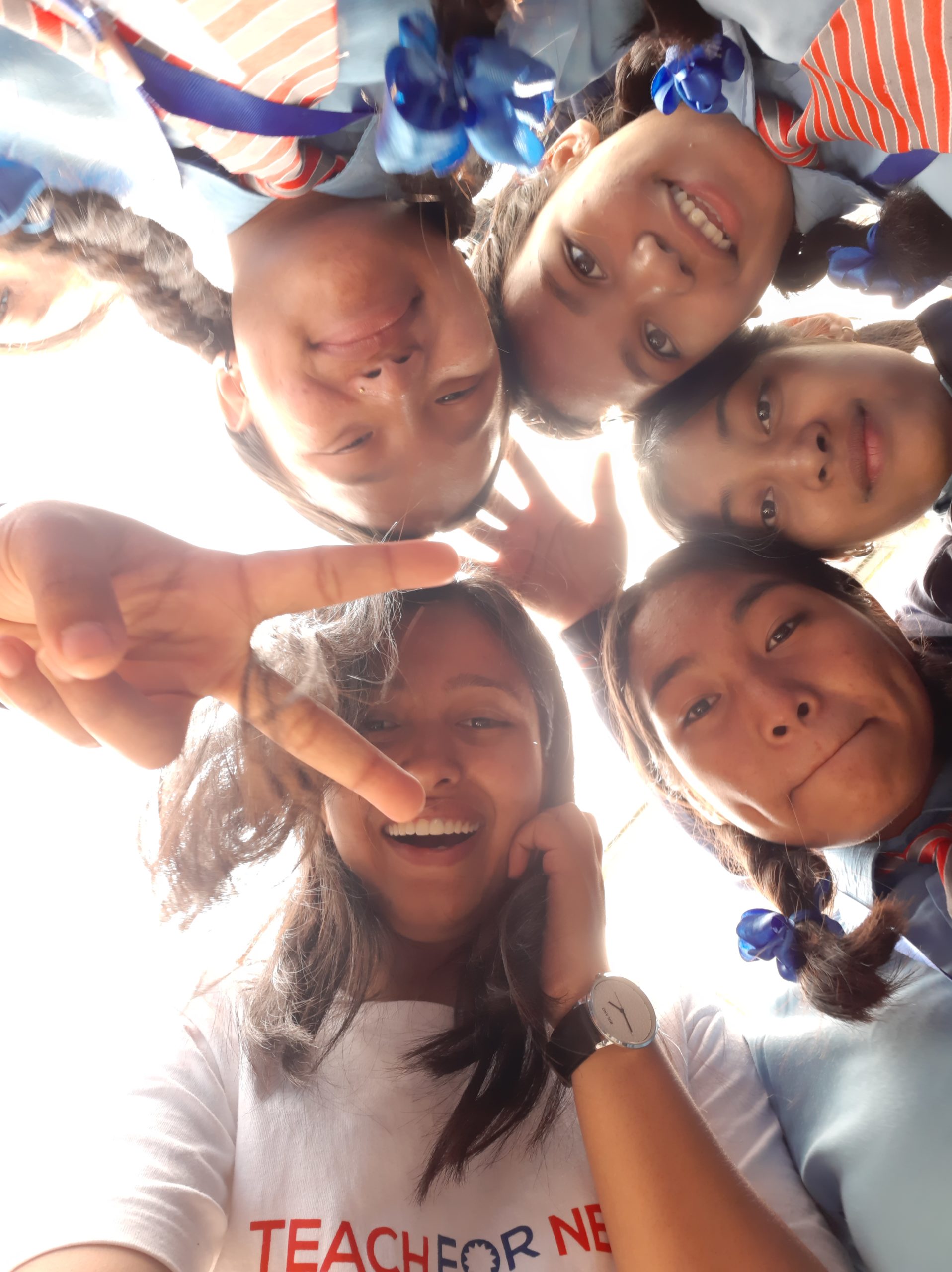Experiential Learning and STEM empowerment – Blog Post
I have always been good at Science and Maths. This is why I chose to study Engineering at University. However, my teachers, and even my parents, used to underestimate my potential and abilities during my school days. I never figured out if that was intentional or unintentional. Yet, I surely know that it was the engraved unconscious perpetuation of male-dominated cultures that do not promote women and minorities. Several factors create the gender gap in STEM fields, and gender stereotypes are one of the major causes of the STEM gender gap. Many of my relatives often ask me why I chose engineering over a more feminine profession, like nursing. My sister is a nurse. Interestingly, during her initial application and entrance procedure, I learned that the government was introducing reserved seats for 5 (out of 20) male students who wanted to study nursing. But nobody showed interest on it, so the government had to withdraw this system. 
Despite our society’s stereotypes, my family never stopped encouraging my siblings and me, which gave us the determination to confront and overcome challenges in life. And because of their efforts, I was able to get quality education. Thus, I have always respected and been passionate about the education field. As I have personally encountered the gender biases and stereotypes that exist in institutions, communities, and industries throughout my journey as a female engineer, I aim to break these stereotypes and show young girls that they can succeed in Science and Technology regardless of gender. This is one of the reasons why I transitioned from Engineering to becoming a schoolteacher by joining Teach For Nepal. Changing my career path as an Engineer to a very different profession, educator, meant that I needed to develop a different set of abilities, such as communication, endurance, and creativity. In addition, having an engineering background helped me in the classroom by allowing me to apply my technical expertise and create a hands-on learning environment.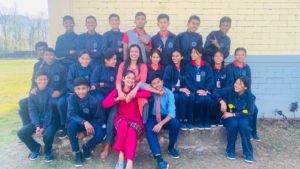
During the initial days of my Teach For Nepal (TFN) Fellowship as a science fellow at Shree Saraswoti Model Secondary School, I was handed over a climate change project initiated by the previous TFN fellow in collaboration with Engage Nepal With Science. For the then-upcoming COP26 (UN climate change conference in Glasgow from October 31 to November 12, 2021), the British Council had launched the Creative Commissions program that aimed to unite people from every part of the world to tackle the climate emergency; Engage Nepal with Science had secured funding to be part of those Creative Commissions to work with Nepalese and Scottish communities through research, art, new technologies, and problem identification to develop appropriate solutions to the climate crisis based on the results of environmental science experiments. In collaboration with students from Scotland, several Nepalese students performed, and are still performing, environmental experiments to study how climate change affects numerous ecosystems and processes of the earth through the perspective of humanity at both the micro and macro levels. Shree Saraswoti Model students have been working on this project in direct and indirect collaboration with students not only from Scottish schools (our collaborating partner is Dunblane Primary School, Stirling) but also from several Nepalese schools, generating an amazing network of like-minded Nepalese schools.
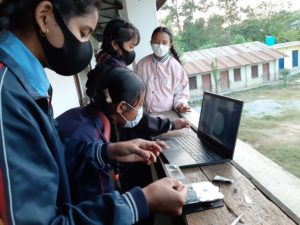 In my opinion, being involved in experience-based climate change projects like this with teachers and students from other schools, locally and internationally, provides science teachers and their students with a wide range of new skills and knowledge like improved communication skills, enhanced global awareness, increased flexibility and adaptability and generating great opportunities for professional development. Collaborating and coordinating with other people with diverse backgrounds helps us discuss complex issues, come up with solutions and present them clearly and concisely. Additionally, it helps us understand the different perspectives and approaches taken by various regions and cultures toward addressing the same issue. Also, being part of the project has provided me with different professional development opportunities like attending conferences, workshops, and training sessions. For instance, I got exposure to cutting-edge research and policy developments on climate during COP26. In addition to the skills and knowledge gained, I have had ample opportunities to interact and collaborate with other teachers and students, which helped me build new networks, share experiences and ideas, and develop a global perspective that has benefited my teaching and research activities. It goes similarly for my students as well. While discussing and comparing the results of the experiments and coming to conclusions to find the best solutions for their community, students now understand that climate change is a global challenge that affects each individual, community, and country.
In my opinion, being involved in experience-based climate change projects like this with teachers and students from other schools, locally and internationally, provides science teachers and their students with a wide range of new skills and knowledge like improved communication skills, enhanced global awareness, increased flexibility and adaptability and generating great opportunities for professional development. Collaborating and coordinating with other people with diverse backgrounds helps us discuss complex issues, come up with solutions and present them clearly and concisely. Additionally, it helps us understand the different perspectives and approaches taken by various regions and cultures toward addressing the same issue. Also, being part of the project has provided me with different professional development opportunities like attending conferences, workshops, and training sessions. For instance, I got exposure to cutting-edge research and policy developments on climate during COP26. In addition to the skills and knowledge gained, I have had ample opportunities to interact and collaborate with other teachers and students, which helped me build new networks, share experiences and ideas, and develop a global perspective that has benefited my teaching and research activities. It goes similarly for my students as well. While discussing and comparing the results of the experiments and coming to conclusions to find the best solutions for their community, students now understand that climate change is a global challenge that affects each individual, community, and country.
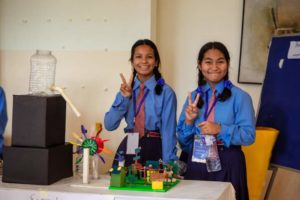
Another program that Engage Nepal with Science has been running and that we have also been part of, is the Women in STEM series of talks where women STEM professionals at different stages of their careers give talks to celebrate the role of women in STEM and to inspire and build confidence in STEM. I believe that the Women in STEM talks have helped students understand the importance of women’s representation in the fields of science, technology, engineering, and mathematics. While addressing all types of learners, STEM fosters a desire for innovation, improves problem-solving skills through creativity, and teaches critical thinking. Thus, we should introduce it to children from a very young age. It improves familiarity and career readiness for the future. Moreover, STEM professions are in high demand in the workforce today, and STEM education helps prepare students for those careers. Students who participate in these types of workshops also develop better communication, leadership, problem-solving, and social skills. I think the crucial step in closing the STEM gap is by giving girls and women the skills and confidence to succeed. We should provide platforms and encourage them to explore more by providing more exposure. And hearing experiences and stories of women who are brilliant in their field of STEM is one invaluable motivation. This type of interaction also helps to shift the perception of male students. So, specifically with girls, introducing STEM before they have a chance to hear all about what is or isn’t for girls while robotics, maths, and computers are for boys, can only improve the odds of them developing a STEM interest.
 In my experience so far, hands-on science projects and other STEM initiatives encourage students to become more active and engaged citizens by promoting awareness of important societal issues, encouraging critical thinking and problem-solving skills. Students start asking questions and figure out imaginative solutions to their curiosity. They then start taking new initiatives which ultimately boosts their self-confidence. This habit of inquiry, reading, and research improves their media literacy too. Since I started being involved in the Engage Nepal with Science projects, I have seen increased self-awareness, academic achievement, and positive behaviours in students; giving students from underrepresented communities the confidence to pursue STEM-related careers, thus promoting diversity and inclusivity in these fields.
In my experience so far, hands-on science projects and other STEM initiatives encourage students to become more active and engaged citizens by promoting awareness of important societal issues, encouraging critical thinking and problem-solving skills. Students start asking questions and figure out imaginative solutions to their curiosity. They then start taking new initiatives which ultimately boosts their self-confidence. This habit of inquiry, reading, and research improves their media literacy too. Since I started being involved in the Engage Nepal with Science projects, I have seen increased self-awareness, academic achievement, and positive behaviours in students; giving students from underrepresented communities the confidence to pursue STEM-related careers, thus promoting diversity and inclusivity in these fields.
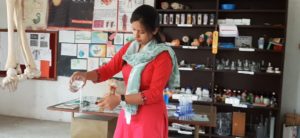
Based on this, I highly recommend that teachers engage their students in experiential learning opportunities. It is a great way of giving them knowledge and expertise that they can put to use in their future careers. Furthermore, these experiences can be used to help students become more flexible, adaptable, and aware of the world around them. In addition, as a teacher, working with educators from other schools can offer you beneficial networking chances and professional development options. 
By exchanging best practices and learning from one another, we can raise the standard of education for all involved learners. Therefore, I would advise teachers everywhere to seize the opportunities for hands-on learning and use them to improve the learning experiences of their students and their professional growth. I believe that the opportunity I have had to empower young girls by giving them the information and skills they need to pursue their interests in STEM fields is perhaps my most important contribution to the Nepalese society.

Post by Nabina Giri
Teach for Nepal Fellow
Shree Saraswoti Model Secondary school

